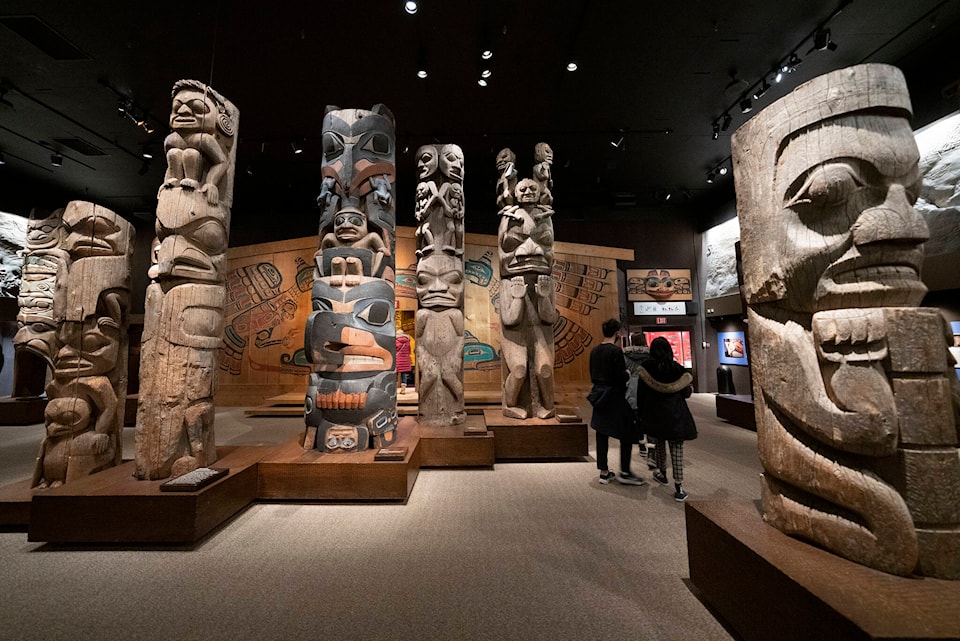The Royal BC Museum reopened two exhibits in the First Peoples Gallery that was closed to visitors in January 2022.
Jonathan Hunt House, a museum installation and real ceremonial house, and an updated version of Our Living Languages welcomed visitors, starting April 2.
The museum closed the third floor to update and expand the cultural narratives of those galleries originally created in the 1960s and 1970s. Old Town reopened in July 2023.
The museum has brought together representatives from First Nations and Indigenous communities across the province to partner on the future of remaining areas of the First Peoples Gallery.
RELATED: ‘Critical thinking’ panels added as RBCM’s Old Town set to reopen this summer
“These spaces on the museum’s third floor share important Indigenous stories and this work is a reflection of the museum’s continued commitment to the Declaration on the Rights of Indigenous Peoples Act by delivering unique experiences for British Columbians,” CEO Tracey Drake said in a news release.
Jonathan Hunt House allows visitors to enter a recreation of the house of Chief Kwakwabalasami, the late Jonathan Hunt, a Kwakwaka’wakw chief who was born and lived his life in the community of Tsaxis, near Fort Rupert.
To refresh the space, the museum brought in master carver and artist Richard Hunt, Jonathan Hunt’s grandson, who helped his father with the original installation in 1977.
“I have great memories of working at the Royal BC Museum because all I ever wanted to do was work with my dad, Henry Hunt, and my wish came true,” Richard Hunt said. “When I was made my dad’s assistant, he decided it was time for him to leave because he had fulfilled a commitment he had with Mungo Martin to always have a Kwaguilth carving at Thunderbird Park. It was great to be back working at the museum and it was an honour to restore these family treasures.”
With help from Jason Hunt, Richard’s nephew and grandson of the late chief, this is the first time the space has been repainted since it opened in 1977.
RELATED: Royal B.C. Museum phasing out galleries that push colonial narrative
Developed in partnership with the First Peoples’ Cultural Council, Our Living Languages shares the history of First Nations languages in B.C..
The exhibit features updated information about the resurgence of First Nations languages in the province, including the addition of two recently recognized languages. These include pentl’atch, which has moved from a sleeping to a living language, and Klallam, to bring the list of B.C. First Nations languages to 36.
Data has also been updated for all languages to reflect the findings of the First Peoples’ Cultural Council’s 2022 Report on the Status of BC First Nations Languages.
“Our Living Languages celebrates the incredible diversity of First Nations languages in British Columbia and acknowledges the language revitalization work of the First Peoples of this land,” said Tracey Herbert, chief executive officer with the First Peoples’ Cultural Council.
“B.C. is a global hotspot for language diversity, with over 50 per cent of Canada’s Indigenous languages located here. The language data included in the updated exhibit is a demonstration of the innovative work of the B.C. First Nations language champions who are acknowledged in Canada and around the world as leaders in community-based language revitalization models and strategies. We invite visitors and people from B.C. to learn more about this important work and the First Nations languages of this land.”
